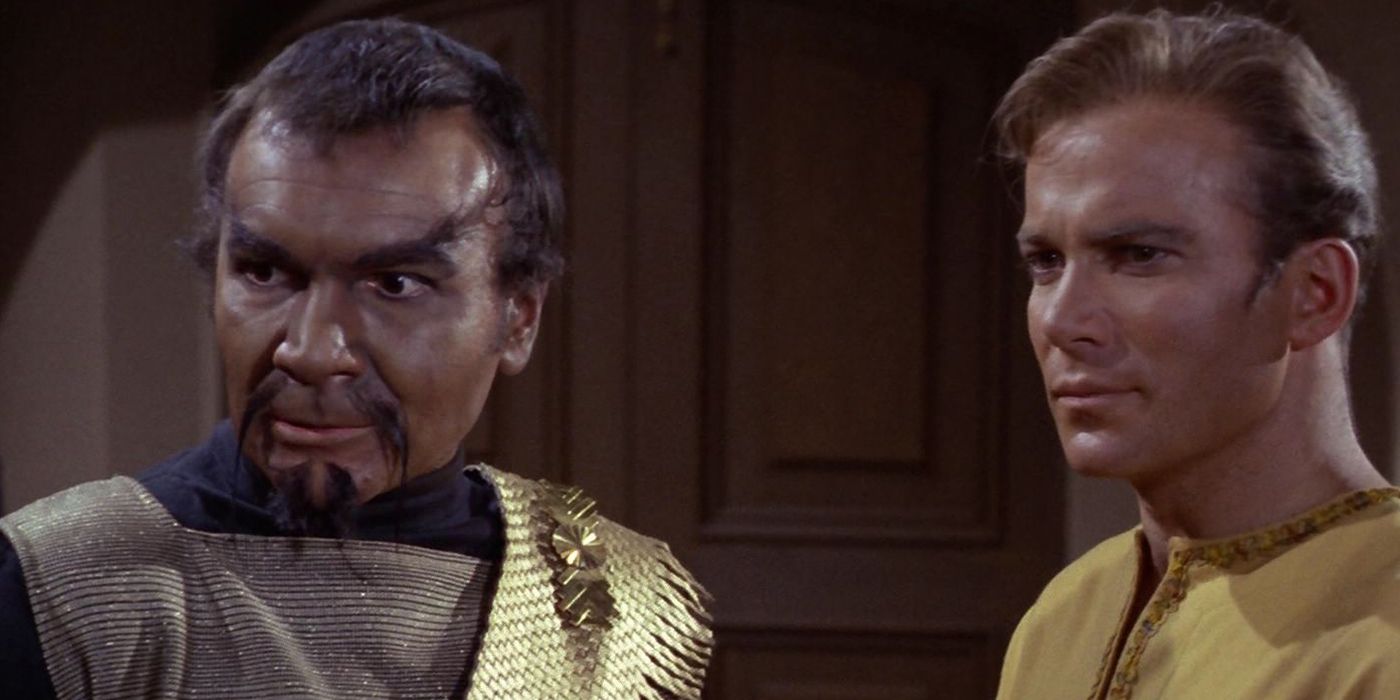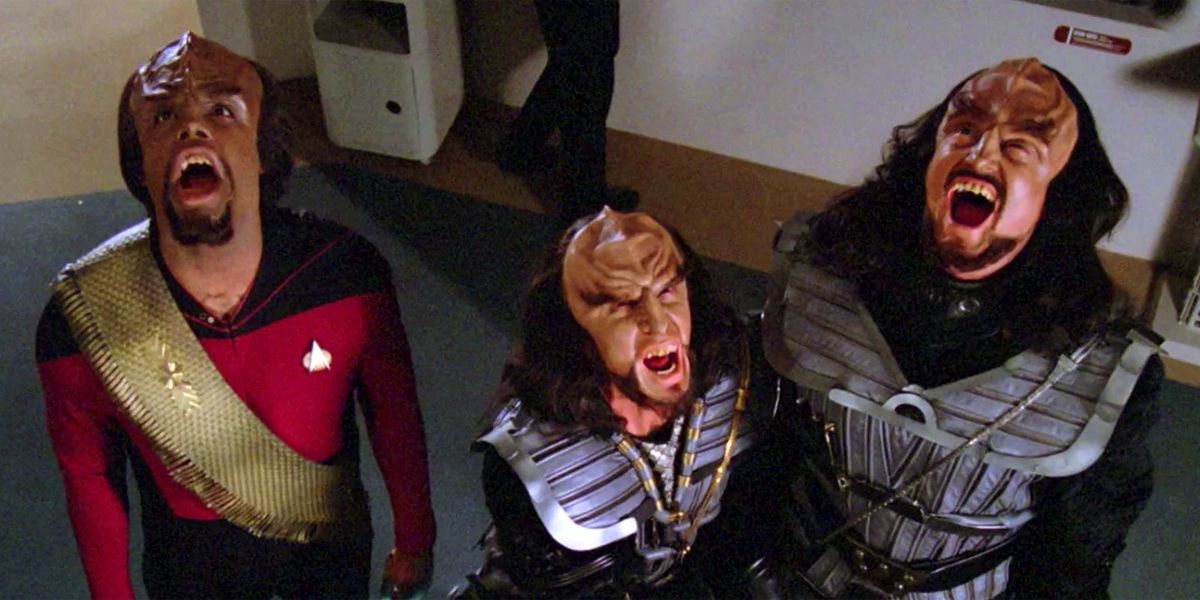How Did They Do The Makeup For The Klingon
The Klingons have been a staple of Star Trek since its inception, most notably with Lt. Worf on Star Expedition: The Next Generation. But visual changes took identify between The Orginal Series and the subsequent movies. Equally a upshot, the alien warriors went from nearly human with some cosmetic skin changes to more than fearsome figures sporting their famous forehead ridges. It was an odd quirk of the franchise for many years equally a continuity fault born out of Star Expedition'south comparatively apprehensive early ambitions.
Klingon forehead ridges first appeared in Star Trek: The Motion Pictureand continued throughout the movies and into The Next Generation. Today, they're accepted without a 2nd thought, and while the Kelvinverse and Star Trek Discovery made balmy adjustments to the movies' design, all of them differ significantly from the way The Orginal Series depicted them.
The Motion Picture Had a Bigger Upkeep Than The Original Series

The simple answer to the Klingon question is that The Orginal Series didn't have access to the kinds of resources that subsequently Star Trek efforts did. At the fourth dimension, it was "just a Tv set show," and an expensive one at that. Money saved on brand-up could be better spent on more elaborate special furnishings, and it was easy enough to invoke an alien species with odd-colored skin and a foreign wardrobe, though their resemblance to Genghis Khan evoked problematic issues of race. The Klingons worked, and many of the performers from The Orginal Seriesreturned to their roles in Star Trek: Deep Infinite Nine, consummate with brow ridges just like Worf.
When the time came to make The Movement Picture, the budget was much college. Star Wars had become a monster striking ii years before, and Paramount hoped to go on pace with it in spectacular fashion. Although the Klingons were merely onscreen for a few minutes, the producers developed a more overtly conflicting look for them, which -- when matched to Jerry Goldsmith'south musical score -- created an instant sense of identity for the species.
The In-Universe Explanation Became an Ballsy Ret-Con

Star Trek's collective fandom was happy to leave the discrepancy be. After all, the new Klingon blueprint looked terrific and before long became a signature part of the race. Merely an ambitious episode of Deep Space Nine forced the writers to admit the continuity issue. Season v, Episode six, "Trials and Tribble-ations," sent the crew -- including Worf -- back in time to the classic Original Serial' Season 2 episode "The Trouble with Tribbles." That before entry featured Klingon adversaries, necessitating an explanation as to why Worf didn't look like his brethren. It was dismissed with a joke and, in that location it remained for a time.
It took Star Trek: Enterprise to finally resolve the discrepancy. Flavour 4, Episode fifteen, "Affliction," and Episode 16, "Divergence," entailed an effort to splice Klingon DNA with variants of the Augment virus that created Khan Nonian Singh. The experiments went wrong and the resulting plague threatened to wipe out the Klingon species. With the assistance of Dr. Phlox, a cure was found, only the results of the virus left many Klingons with man features. Such "deformities" continued for generations of Klingons, roofing the catamenia of The Orginal Serial.
It may exist one of the nigh elegant pieces of retroactive continuity ever, and its evolution over then many decades speaks to the fans' ability to overlook the discrepancy with good cheer. Information technology was allowed to remain a fun little hiccup in canon continuity until the right story came along, first with Deep Space 9 and finally with Enterprise. Information technology helped strengthen the timeline, but more chiefly, information technology found a good idea that otherwise would be a throwaway fluke.
Source: https://www.cbr.com/star-trek-klingon-design-change/
Posted by: rodriguesaforeg.blogspot.com

0 Response to "How Did They Do The Makeup For The Klingon"
Post a Comment